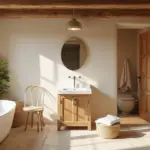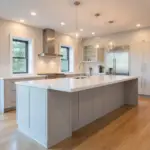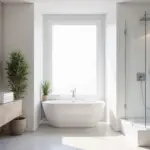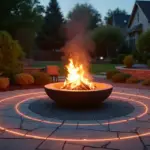Howdy, folks! Gabriel Rodríguez-Watson here, ready to shed some light on one of my favorite topics: farmhouse kitchen lighting. Picture this: you’re standing in your kitchen, the heart of your home, and it’s darker than a moonless night on the ranch. Not exactly the warm, inviting space you had in mind, right? Well, don’t you worry? We’re about to transform that dull space into a cozy haven that’ll make you want to whip up a batch of your famous chili at midnight.
You see, farmhouse kitchen lighting is like the perfect song on a summer evening – it sets the mood, creates atmosphere, and brings everything together. It’s one of the must-haves for any farmhouse kitchen remodel, right up there with a deep farmhouse sink and some weathered wood accents. The right lighting can turn your kitchen from a cold, sterile space into a warm, welcoming heart of the home faster than you can say “Pass the biscuits.”

So, saddle up, partners! We’re about to take a ride through the world of farmhouse kitchen lighting. From vintage-inspired pendant lights to sleek under-cabinet fixtures, we’ve got it all. By the time we’re done, you’ll be ready to light up your farmhouse kitchen like a Christmas tree on the prairie. Let’s get this show on the road!
Key Takeaways
Before we dive in deeper than a well in the desert, let’s corral some key points:
- Variety is the spice of life, and that goes for lighting too. We’ll explore different styles that’ll give your kitchen that cozy farmhouse feel.
- Choosing the right bulbs is like picking the perfect horse – it’s essential for the ride. We’ll talk about LED vs. incandescent, and how to pick the right color temperature.
- A good lighting plan is like a well-choreographed square dance. We’ll show you how to combine task, ambient, and accent lighting.
- Dimmer switches are your new best friend. They’re like having a volume control for your lights.
- Layering your lighting is key. It’s like putting together the perfect outfit – each piece plays a role in creating the overall look.

Now, let’s mosey on down to the details and light up your farmhouse kitchen!
Key Lighting Styles
When it comes to farmhouse kitchen lighting, we’ve got more options than a general store on delivery day. Let’s break down some of the key players in this lighting rodeo.
Statement Chandeliers
A statement chandelier in a farmhouse kitchen is like a cowboy in a tuxedo – unexpected, but boy, does it make an impact! These bold beauties serve as the crown jewel of your kitchen, drawing the eye and adding a heap of character.
You’ve got options ranging from rustic wood designs that look like they were crafted from an old wagon wheel to elegant wrought iron pieces that could’ve been forged by the village blacksmith. The key is to match the size to your ceiling height. A chandelier that’s too big for a low ceiling is like trying to fit a longhorn in a chicken coop – it just won’t work.
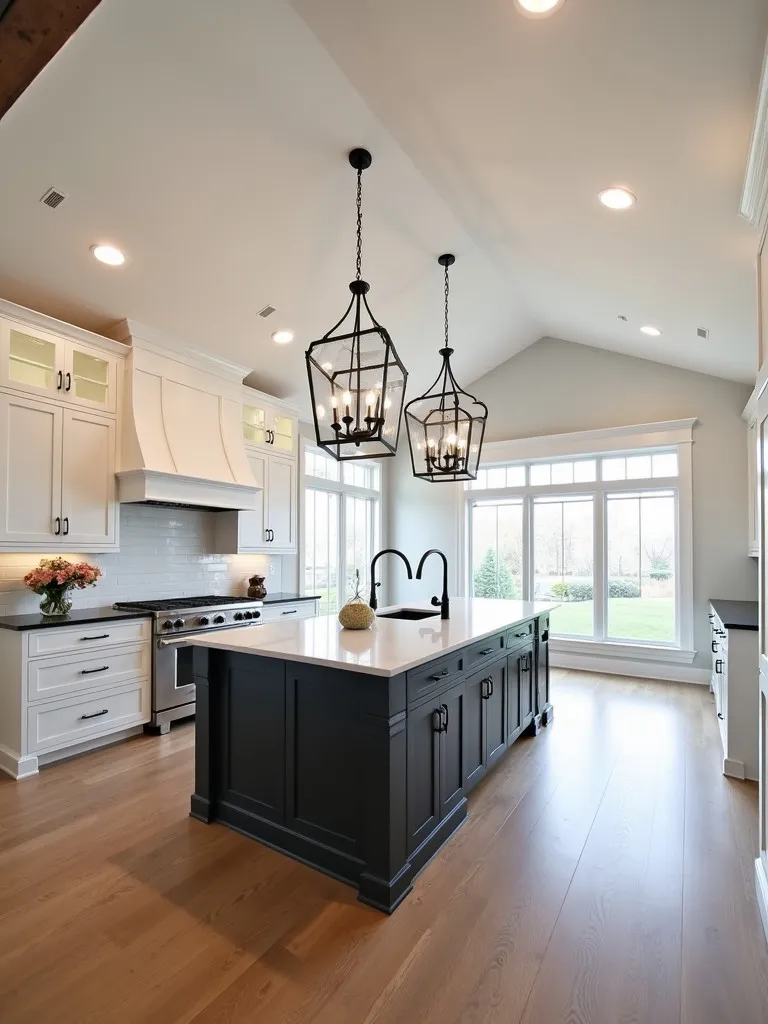
Here’s a fun fact for you: back in 1898, when many farmhouses were just getting electrified, folks often used electric versions of gas fixtures. So if you’re going for historical accuracy, you might want to look for chandeliers that mimic that style. It’s like a little nod to our ancestors who were probably mighty impressed with their newfangled electric lights!
Pendant Lighting Options
Moving on to pendant lights – these are the workhorses of farmhouse kitchen lighting. They’re like the trusty ranch hands of the lighting world, ready to provide focused illumination wherever you need it most.
Pendant lights come in more varieties than there are cattle breeds in Texas. You’ve got glass pendants that can be as clear as a mountain stream or colored like a desert sunset. Metal pendants can add an industrial touch, while ceramic ones bring in a handcrafted feel.
Now, here’s a little tidbit for you: over 70% of homeowners choose pendant lights for their kitchen islands. Why? Because they provide focused lighting right where you need it, and they look darn good doing it.

When you’re hanging your pendants, think about scale. You want them to be like Goldilocks’ porridge – not too big, not too small, but just right. A good rule of thumb is to hang them about 30-36 inches above your countertop or island. And speaking of picking the right farmhouse kitchen colors, your pendant lights can be a great way to add a pop of color or tie in with your overall color scheme.
Recessed Lighting Choices
Now, let’s talk about recessed lighting. These are the ninjas of the lighting world – they do their job without drawing attention to themselves. They’re perfect for maintaining that clean, modern look while still providing plenty of illumination.
Recessed lights are like the strong, silent type in old Westerns – they don’t say much, but they get the job done. They’re especially great for modern farmhouse kitchens where you want to keep that open, airy feel. And let me tell you, they’re as efficient as a well-oiled machine. When used with energy-efficient bulbs and smart lighting systems, recessed lights can reduce your energy consumption by up to 30%. That’s enough savings to buy a whole herd of chickens!

Under-Cabinet Fixtures
Last but not least, let’s shine a light on under-cabinet fixtures. These are the unsung heroes of kitchen lighting, providing essential task lighting for your countertops. They’re like the hardworking farm dog – always there when you need them, making your life easier without asking for much in return.
You’ve got two main options here: LED strips and puck lights. LED strips are like a river of light, providing a continuous glow along your countertop. Puck lights, on the other hand, are like spotlights, offering focused illumination in specific areas.
Now, here’s something to make you sit up straighter than a prairie dog on alert: under-cabinet lighting can improve your kitchen task efficiency by up to 50%. That’s right, folks. With the right under-cabinet lighting, you’ll be chopping, dicing, and slicing faster than a ranch hand at a barbecue.
Choosing Bulb Types
Now that we’ve corralled our lighting fixtures, let’s talk about what makes them shine – the bulbs. Choosing the right bulb is like picking the perfect cowboy hat – it’s essential for completing the look and getting the job done right.

LED vs Incandescent
In the world of light bulbs, we’ve got two main contenders duking it out: LED and incandescent. Now, I know some folks are as attached to their incandescent bulbs as a cowboy is to his favorite horse. But let me tell you, LEDs are the new stallion in town, and they’re here to stay.
LED bulbs are like the energizer bunny of the lighting world – they keep going and going. These little powerhouses use up to 90% less energy than incandescent bulbs and can last up to 25 times longer. That’s like having a horse that can run for days without needing a break or a feed!
But it’s not just about efficiency. LEDs offer a range of color temperatures, from warm white that’s cozier than a campfire on a chilly night, to cool daylight that’s clearer than a Texas sky. This variety lets you customize the feel of your kitchen, whether you’re going for a warm, inviting atmosphere or a bright, energizing space.

Energy Efficiency Tips
Now, let’s talk about saving energy faster than a squirrel stashing nuts for winter. Using energy-efficient lighting isn’t just good for your wallet – it’s good for the planet too. And let me tell you, there’s nothing more satisfying than knowing you’re doing right by Mother Nature while also saving some greenbacks.
First off, consider using timers and motion sensors. These gadgets are handier than a pocket on a shirt. They make sure your lights are only on when you need them, cutting down on waste faster than a good pair of shears. And let me tell you, homes that use Energy Star-rated lighting products can save up to $200 per year on their energy bills. That’s enough for a nice new set of cast iron pans!
Another tip: keep your fixtures clean. Dust and grime can build up faster than gossip in a small town, and it can reduce the amount of light your fixtures put out. Regular cleaning will keep your lights shining bright and efficiently.
Here’s something to consider when you’re choosing farmhouse kitchen flooring: light-colored floors can help reflect light around the room, making your space feel brighter and reducing the need for additional lighting. It’s like having a built-in light amplifier right under your feet!
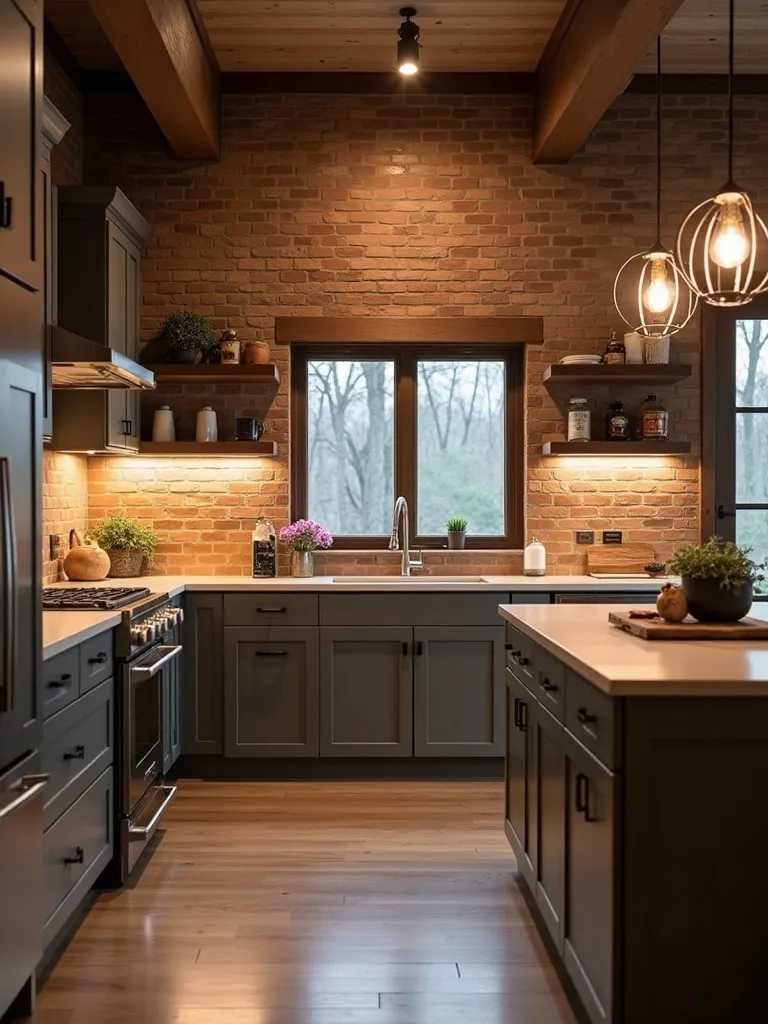
Bulb Longevity Factors
Now, let’s talk about making your bulbs last longer than a Western standoff. The lifespan of a bulb depends on a few factors, kind of like how the lifespan of a good pair of boots depends on how you treat ’em.
First off, usage patterns play a big role. Turning lights on and off more often than an indecisive rooster can shorten their lifespan. This is especially true for CFLs, but it affects LEDs and incandescents too. If you’ve got an area where you’re always flipping the switch, consider using a dimmer instead. It’s easier on the bulbs and lets you set the mood too.
The type of fixture matters too. Some fixtures can trap heat, which is about as good for a bulb as a wool sweater on a Texas summer day. Look for fixtures with good ventilation to keep your bulbs cool and happy.
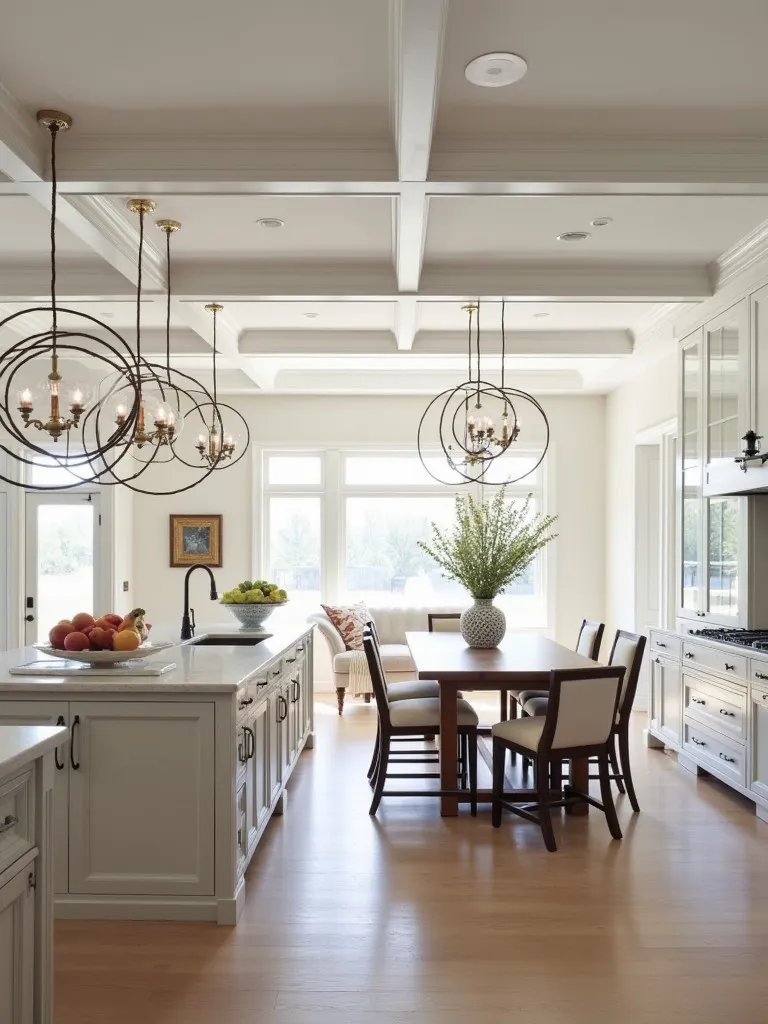
And here’s a tip that’s as useful as a good lasso: handle your bulbs with care during installation. Oils from your skin can create hot spots on halogen bulbs, shortening their life faster than a roadrunner on a hot day. Use gloves or a clean cloth when installing them.
Understanding Color Temperature
Alright, partners, let’s talk about something as important to your kitchen’s atmosphere as the right seasoning is to a good chili-color temperature. It might sound technical, but trust me, getting this right is key to creating that warm, inviting farmhouse feel we’re all after.
Warm vs Cool Light
Now, when we talk about warm and cool light, we’re not talking about the temperature you’d feel if you touched the bulb (please don’t do that, by the way). We’re talking about the color of the light, which can range from a warm, golden glow to a cool, bluish hue.
Warm light, which typically has a color temperature between 2700K and 3000K, is like a cozy campfire on a chilly evening. It creates an inviting, comfortable atmosphere that’s perfect for intimate family dinners or relaxing with a good book and a cup of coffee. This kind of light makes everyone look good too – it’s like nature’s Instagram filter, softening features and creating a flattering glow.

Cool light, on the other hand, has a higher color temperature, usually around 3500K to 5000K. It’s crisp and invigorating, like the clear light of a winter’s morning. This type of light is great for task-oriented areas where you need to see clearly, like over a cutting board or a kitchen island where you’re rolling out pie dough.
Here’s a little nugget of wisdom for you: in a farmhouse kitchen, you’ll generally want to lean towards the warmer end of the spectrum. It creates that cozy, homey feel that we all associate with farmhouse style. Studies show that over 60% of homeowners prefer warm white lighting for its ability to create a cozy atmosphere. It’s like wrapping your whole kitchen in a warm, comforting hug.
Creating Ambiance
Now, creating the right ambiance in your farmhouse kitchen is like orchestrating a perfect hoedown – it’s all about getting the right elements to work together in harmony. And let me tell you, layering your lighting is key to this.
Think of your lighting in three layers: ambient, task, and accent. Ambient lighting is your overall illumination, like the general hubbub of conversation at a party. Task lighting is focused and functional, like the caller at a square dance, directing the action where it needs to go. And accent lighting? Well, that’s like the fancy footwork and flourishes that make the dance shine.
To get this right, you’ll want to use a mix of light sources. Overhead lights provide your ambient lighting, under-cabinet fixtures give you task lighting, and things like pendant lights or strategically placed wall sconces can serve as your accent lighting.

And here’s a tip that’s as valuable as a gold nugget in a prospector’s pan: use dimmers. Being able to adjust the brightness of your lights is like having a volume control for your kitchen’s atmosphere. You can have it bright and cheery for Sunday morning pancakes, then dim it down for a romantic dinner for two.
Remember, a well-designed lighting plan can increase the perceived value of your kitchen by up to 15%. So not only will you be creating a space that feels as warm and inviting as fresh-baked bread, but you’ll also be adding value to your home faster than a prize pig at the county fair.
Matching Kitchen Decor
Now, let’s talk about making sure your lighting fixtures play nicely with the rest of your kitchen decor. It’s like making sure all the instruments in your kitchen orchestra are in tune – everything needs to work together to create that perfect farmhouse symphony.
When you’re picking out your fixtures, think about the other elements in your kitchen. What kind of hardware do you have on your cabinets? What about your faucets? You want your lighting fixtures to complement these elements, not fight with them like two roosters in a barnyard.

For a farmhouse kitchen, finishes like brushed nickel, oil-rubbed bronze, or even distressed white can work beautifully. These finishes have more character than a small-town diner, and they’ll age gracefully over time, developing a patina that only adds to their charm.
And here’s a little secret for you: over 80% of homeowners consider the style and finish of lighting fixtures when choosing them for their kitchens. So you’re in good company if you’re spending some time mulling over your options!
Designing a Lighting Plan
Alright, partners, we’re in the home stretch now. Let’s talk about putting all these pieces together to create a lighting plan that’ll make your farmhouse kitchen shine brighter than a new penny.
Layered Lighting Approach
Now, designing a good lighting plan is like planning a cattle drive – you need to consider all the elements and how they work together. And just like a good cowboy uses different tools for different jobs, you’ll want to use different types of lighting for different purposes in your kitchen.
Start with your ambient lighting. This is your overall illumination, usually coming from overhead fixtures like your statement chandelier or recessed lights. It’s like the wide-open sky on a clear day, providing general light to the whole space.

Next, add in your task lighting. This is the focused light you need for specific jobs, like chopping vegetables or reading recipes. Under-cabinet lights and pendant lights over an island or sink are great for this. Think of these as the spotlight on a rodeo rider – they illuminate exactly where the action is happening.
Finally, sprinkle in some accent lighting. This is where you can have some fun and add personality to your space. Use wall sconces to highlight a beautiful backsplash, or add some rope lights above your cabinets for a warm glow. It’s like adding a touch of sparkle to your favorite cowboy boots – it’s not necessary, but boy, does it make things more interesting!
Here’s a nugget of wisdom for you: a well-designed lighting plan can increase kitchen usability by up to 30%. That’s like adding an extra day to your week, in terms of productivity!
Focal Point Illumination
Now, let’s talk about using lighting to create focal points in your kitchen. It’s like directing a spotlight on the star of the show – it draws the eye and adds drama to your space.

Got a beautiful farmhouse sink? Light it up! A unique backsplash that tells a story? Shine a light on it! Using lighting to highlight architectural features or decorative items is like framing a prize-winning photograph – it showcases the best parts of your kitchen.
Consider using adjustable track lighting or recessed lights with directional trims. These are like the lassos of the lighting world – you can point them wherever you need them. And let me tell you, highlighting architectural features with lighting can increase the perceived value of a kitchen by up to 20%. That’s a return on investment that’d make any cattle baron proud!
Task and Accent Lighting
Last but not least, let’s dive a little deeper into task and accent lighting. These are like the salt and pepper of your lighting plan – they might seem small, but they make a big difference in the overall flavor of your space.
Task lighting is crucial for keeping your kitchen safe and functional. After all, you don’t want to be squinting like you’re staring into the sun while you’re trying to read a recipe or chop onions. Bright lights over workspaces can make your kitchen tasks easier than falling off a log. Proper task lighting can reduce kitchen accidents by up to 25%. That’s safer than a herd of well-trained cattle dogs!

Now, accent lighting is where you can let your personality shine. Use it to highlight open shelving, illuminate a prized collection of cast iron skillets, or create a warm glow behind glass-front cabinets. It’s like adding a bit of sparkle to your favorite cowboy hat – it’s not necessary, but it sure does make things more interesting!
And here’s a fun fact for you: in traditional farmhouses, accent lighting often comes from the warm glow of a wood-burning stove or fireplace. While we might not all have a hearth in our kitchens these days, we can recreate that same warm, inviting glow with strategically placed accent lights.
Closing Thoughts
Well, folks, we’ve covered more ground than a cattle drive across the Great Plains. From statement chandeliers to under-cabinet task lighting, we’ve explored all the nooks and crannies of farmhouse kitchen lighting.
Remember, creating the perfect farmhouse kitchen lighting is like breaking in a new pair of boots – it might take some time and effort, but the result is worth it. It’s about finding that perfect balance between style and functionality, between honoring the past and embracing the present.
Don’t be afraid to experiment with different lighting options. Mix and match styles like you’re putting together the perfect outfit for a barn dance. And most importantly, make sure your lighting choices reflect your style. After all, your kitchen should be as unique as a fingerprint and as welcoming as a warm handshake.

Now, I know we’ve thrown a lot of information your way, faster than a ranch hand tossing hay bales. So here’s my final piece of advice: take your time. Rome wasn’t built in a day, and neither is the perfect farmhouse kitchen lighting setup. Start with your ambient lighting, then layer in task and accent lighting as you go. Before you know it, you’ll have a kitchen that’s lit up like the star on top of a Christmas tree.
And remember, if you ever feel lost in the wilderness of lighting options, don’t hesitate to seek out a professional. Sometimes, having an expert guide is like having a trusty map when you’re exploring new territory.
So go forth, light up your kitchens, and create spaces that are as warm and inviting as a campfire on a cool evening. Your farmhouse kitchen is waiting to shine brighter than a desert sun at high noon!

